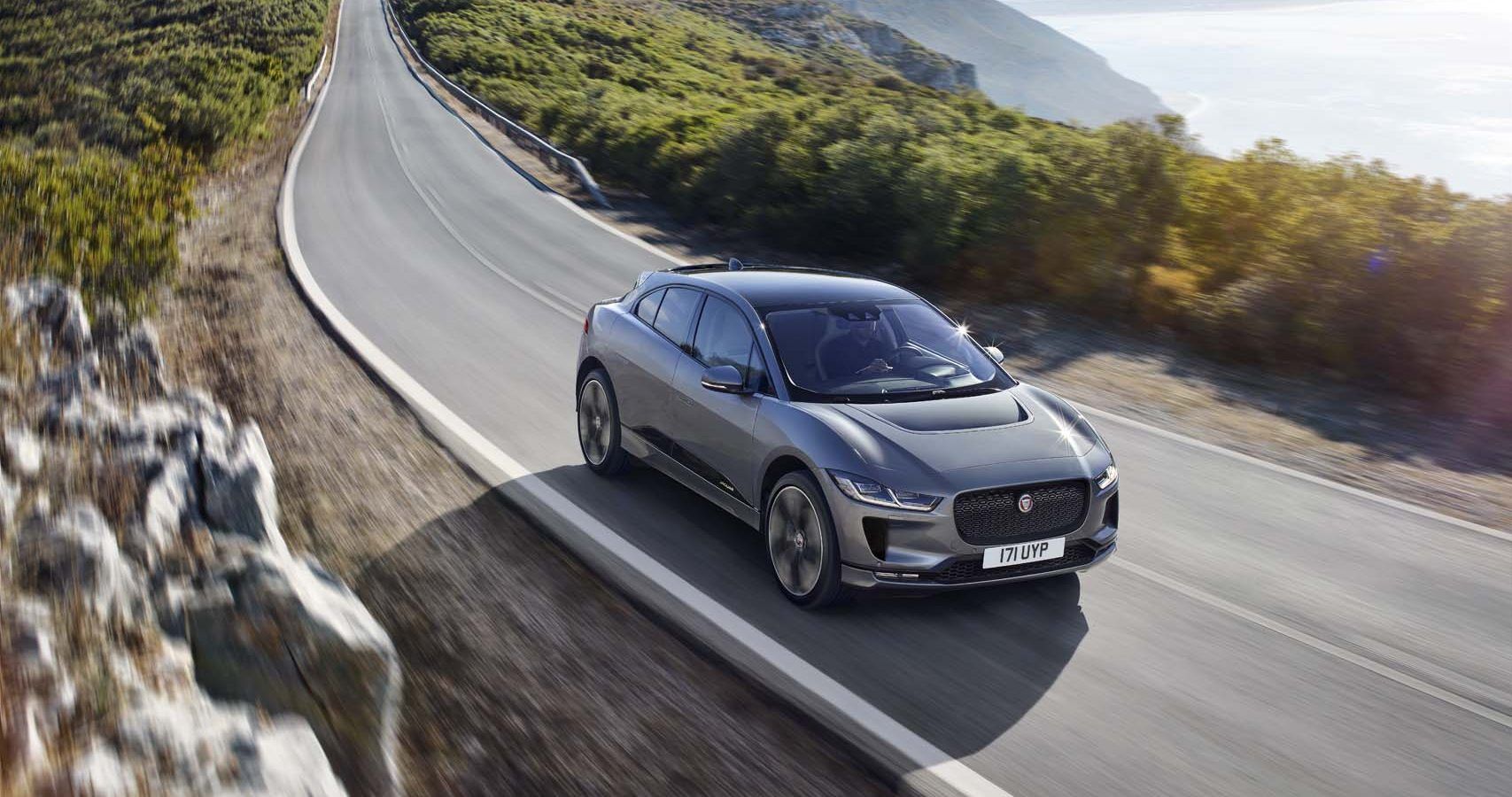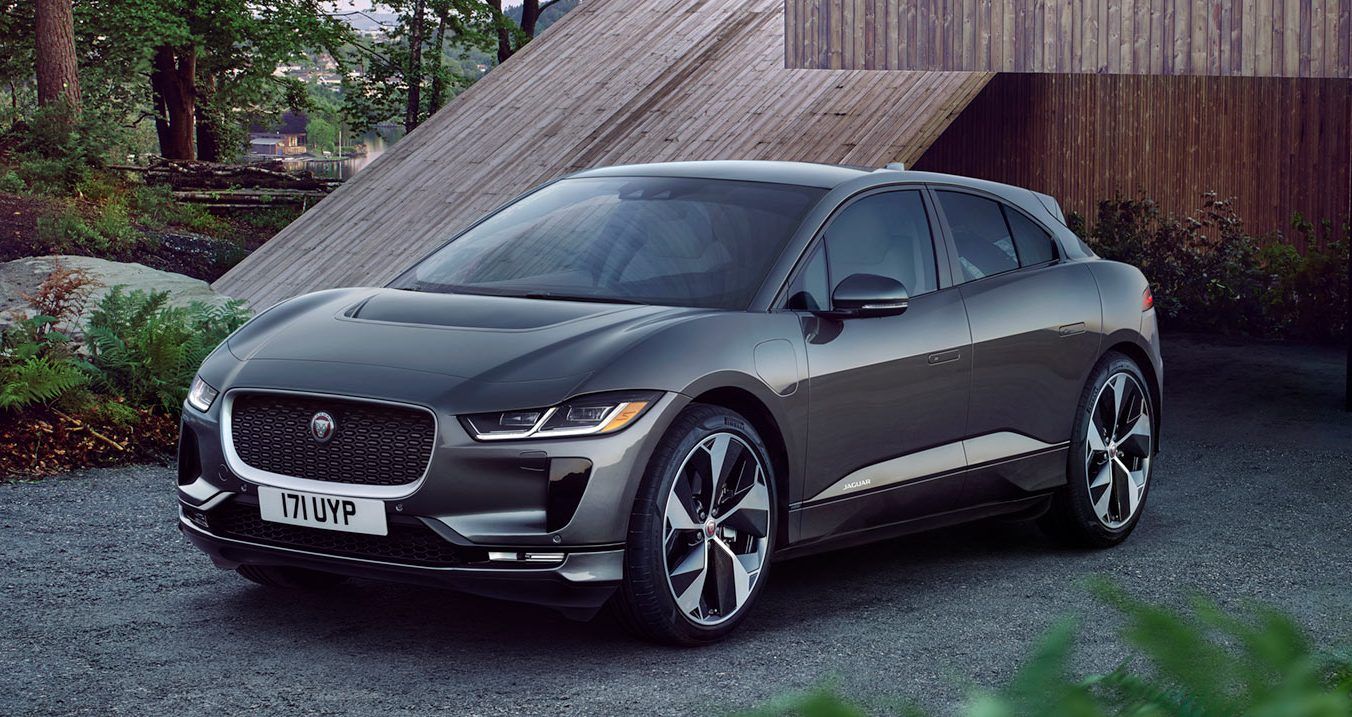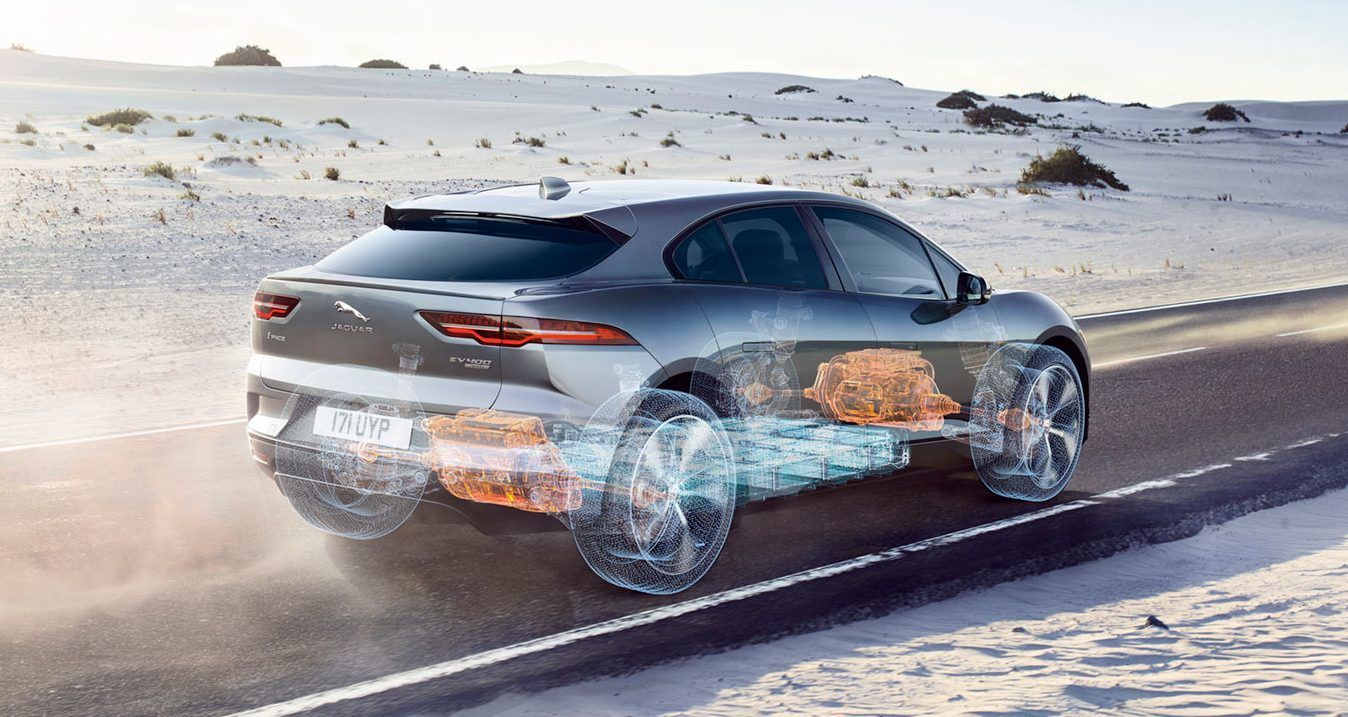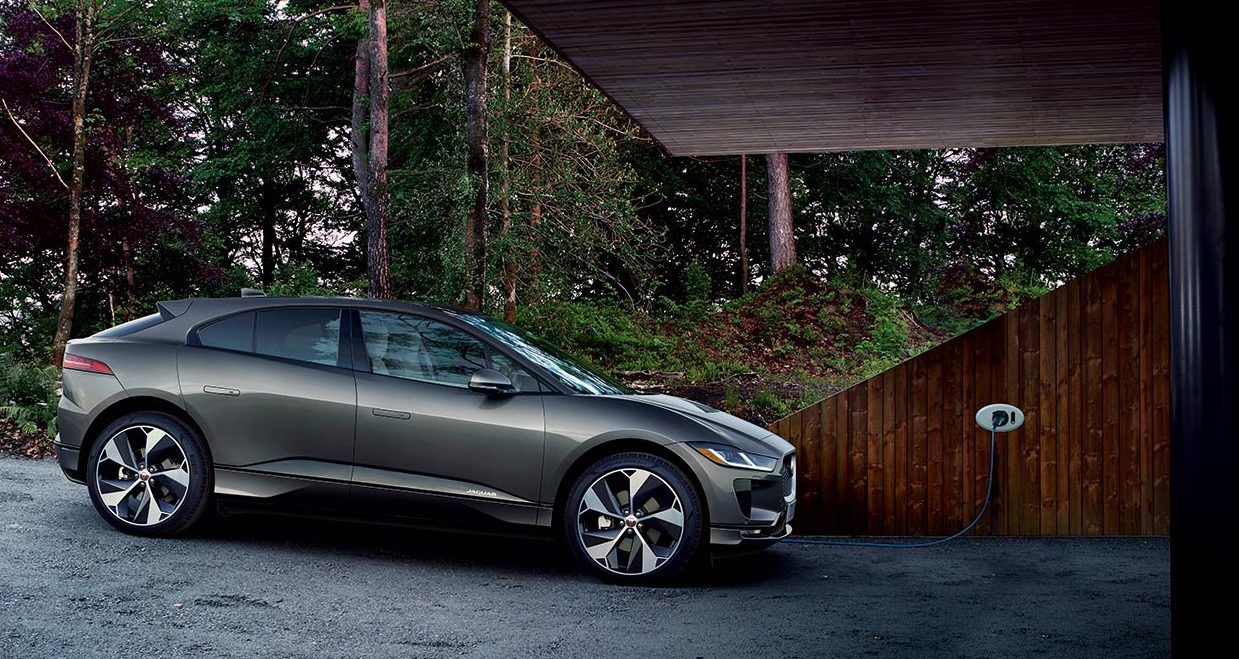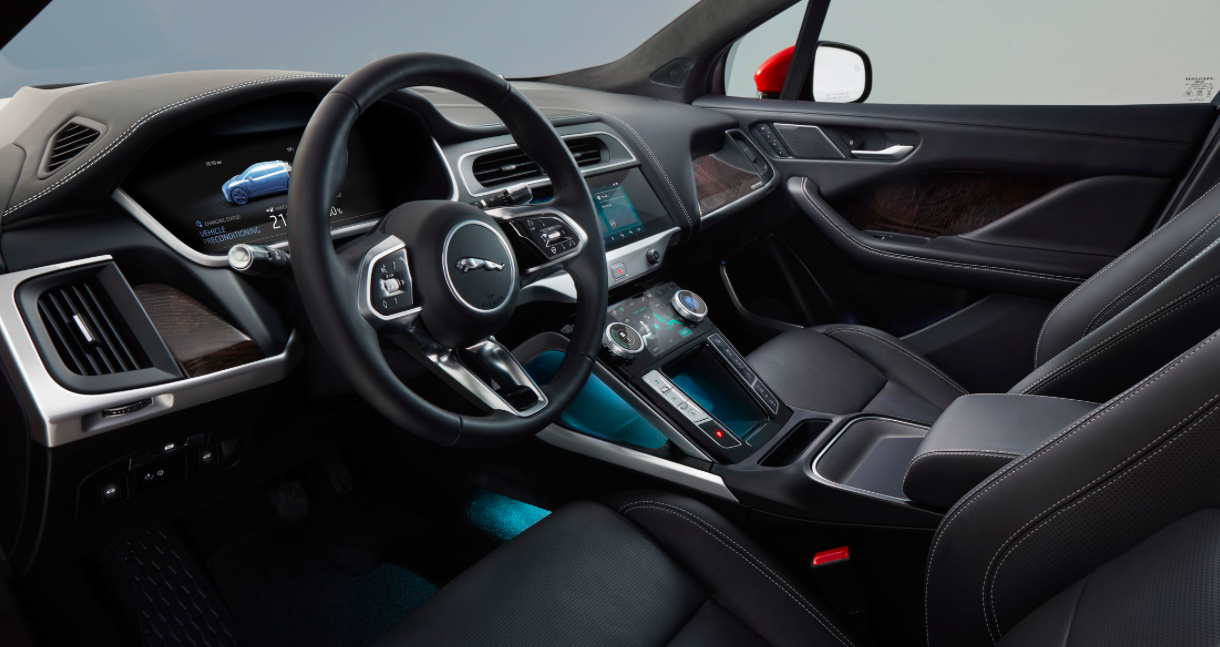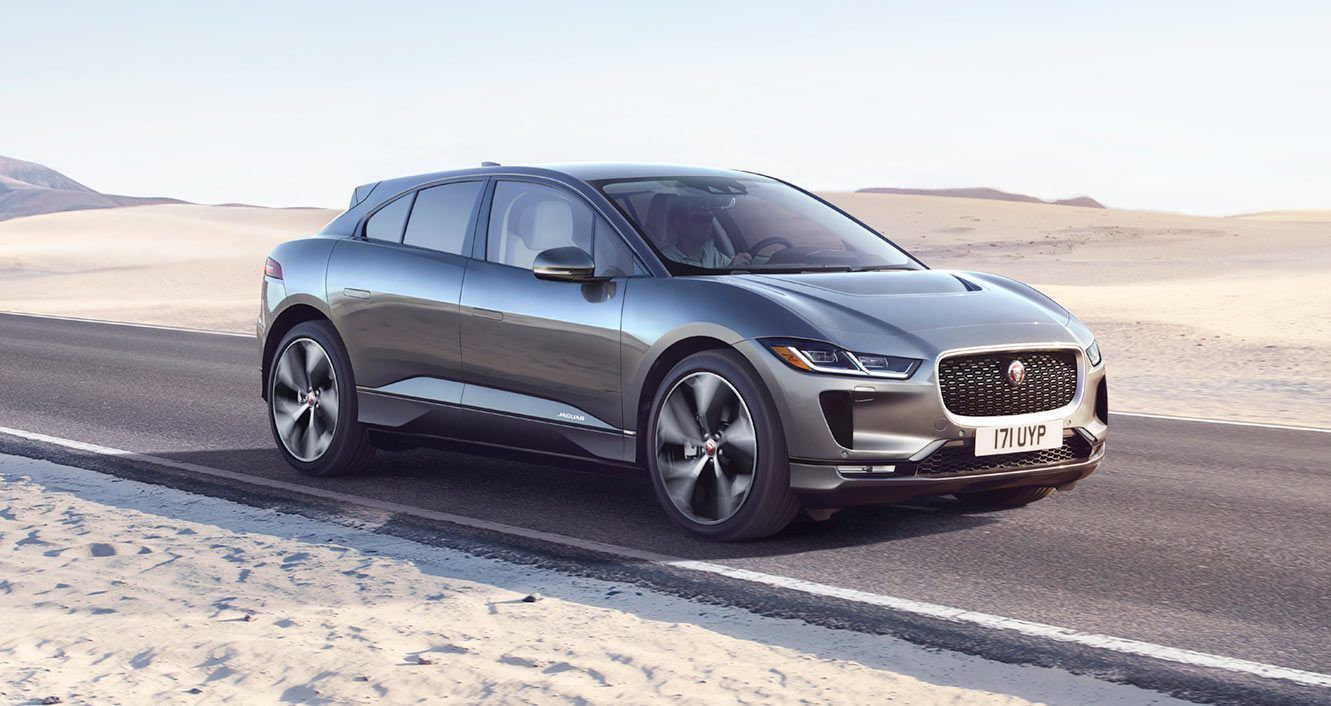The 2019 I-Pace SUV represents Jaguar’s first step into the electric vehicle market. Distinctive styling, a duo of electric engines paired to all-wheel drive, and an opulently luxurious interior allow the I-Pace to occupy a market niche that varies slightly from its main competitor, Tesla’s Model X. Jaguar claims the I-Pace has a range of 240 miles on a single charge.
Attention to comfortable details, as well as sustainability, are prioritized over outright performance, all available at a slightly lower base price when sales begin in late-summer 2018. The I-Pace follows in the footsteps of Jaguar’s I-TYPE Formula E racing car, but though it is the British manufacturers first production EV, the platform will also be shared with a future offering from fellow Tata Motors subsidiary, Range Rover.
Exterior Design
The I-Pace’s styling places it firmly within a new design aesthetic for Jaguar, who wants their first electric vehicle to stand out from the rest of their product lineup. But that sleek exterior isn’t just for style points, it also allows for an impressive 0.29 coefficient of drag thanks to pronounced wheel arches, as well as a grille that curves air inwards and then out through hood scoops, a wind-tunnel optimized roofline, and a rear diffuser (which also helps to highlight the lack of exhaust pipes).
Powerful rear haunches hint at the impressive power the I-Pace brings to the table, while its head and tail lights are fully LED to remind the world of the SUV’s energy efficient intentions. Wheelbase and length are similar to the gasoline-powered F-Pace, at 117.7 and 184.3 inches respectively, but in the I-Pace more of the overall shape is taken up by the cabin, which is topped by a full-length panoramic glass roof constructed from an infrared-absorbing laminate.
RELATED: JAGUAR XE SV PROJECT 8: JAGUAR'S FASTEST SEDAN
Mechanicals
The all-electric underpinnings of the I-Pace place it in the market as a direct competitor with Tesla’s Model X. Similar to the Model X, two Permanent Magnet Synchronous Electric Motors power an axle each in an all-wheel-drive setup. Combined output is respectable at 394 horsepower and 512 lb-ft of torque, the latter available almost instantaneously, as in all electric-powered vehicles. That low-end grunt allows the I-Pace to sprint to 60 miles per hour in only 4.5 seconds, not quite as fast as the Tesla, but still remarkably quick for a full-sized SUV that tips the scales at 4,784 pounds. (Thanks to the skateboard layout of the battery and aluminum structure, the I-Pace is Jaguar’s most torsionally rigid vehicle to date, while front to rear weight distribution approaches a perfect 50:50 ratio.)
Additional drivetrain and performance technology includes torque vectoring by braking on both axles, Jaguar’s All Surface Progress Control, a low traction launch control system, and optional adaptive damping suspension. To go along with adaptive damping suspension, active air springs lower the I-Pace at highway speeds, improving aerodynamics and efficiency. Single pedal driving is enabled both in town and while cruising, as the I-Pace captures the energy creating during braking to recharge its batteries.
Jaguar claims a range of 240 miles with a fully charged 90 kWh lithium-ion battery, though a European NEDC test rated the I-Pace at 300 miles. Eco mode enhances efficiency by encouraging tamer driving while controlling a variety of cabin features for optimum range. The I-Pace’s battery can charge up to 80 percent in only 40 minutes when utilizing a 100-kW fast charger. Home charging on AC power takes 12.9 hours to reach 100 percent capacity.
NEXT: JAGUAR UNVEILS NEW ELECTRIC RACE CAR
Interior and Technology
Jaguar intends the I-Pace to occupy a luxurious step above the Tesla Model X, with an interior aesthetic more in line with Jaguar’s other offerings (at least when compared to the radically styled exterior). Premium leather, as well as sustainably-sourced material packages, will be available to offer more eco-friendly options packages for the distinguishing buyer while Jaguar’s InControl system includes push-button gear selectors, a touchscreen infotainment system paired to an 11-speaker Meridian sound system, as well as a digital instrument cluster and head’s up display.
Jaguar’s goal with the I-Pace’s interior is to highlight the quiet ride inherent to electric vehicles, as well as the fact that a cab-forward design—allowed for by the lack of an internal combustion engine—means increased legroom and cargo space in both rows of seating. (The I-Pace seats five to the Model X’s seven, however.) Industry standards like adaptive cruise control, steering and blind spot assist, and a power liftgate are available but do not come standard on the base I-Pace S. Connectivity includes a wi-fi hotspot, navigation system, and automatic remote updates.
NEXT: JAGUAR I-PACE EV HAS UNEXPECTED FEATURE
Pricing
A base model Jaguar I-Pace will cost slightly less than a Model X, with pricing starting at $70,495 including dealer delivery fees. That figure escalates quickly with the selection of any of the wide range of options packages, which include the addition of leather-topped by the limited run of First Edition models that will cost $86,000. Two trim levels, SE and HSE, occupy the region between the entry-level S package and the First Editions. (For context, the Model X 75D starts at $80,700 while a P100D can cost north of $140,000.)

